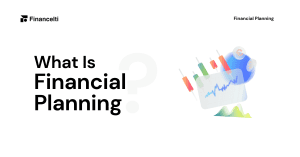Table of Contents
Introduction to Household Budget Planning
Budget planning is an essential aspect of managing your household finances effectively. It allows you to take control of your money, understand where it is being spent, and make informed decisions about your financial future. In this comprehensive guide, I will walk you through the step-by-step process of creating and mastering a household budget to achieve financial stability.
Why is household budget planning important?
Household budget planning provides a clear picture of your income and expenses, enabling you to make informed financial decisions. Without a budget, it’s easy to overspend, accumulate debt, and struggle to save for future goals. By creating a budget, you gain control over your finances, reduce financial stress, and work towards achieving your financial aspirations.
:max_bytes(150000):strip_icc()/GettyImages-1309118129-3660c346493a4029ad23f315a19ae46e.jpg?w=1290&ssl=1)
Assessing your income sources
The first step in creating a household budget is to assess your income sources. Begin by identifying all the streams of income you receive, such as salaries, freelance work, or investment returns. Take into account both fixed and variable income sources to get an accurate estimate of your monthly income. By understanding your income sources, you can establish a solid foundation for your budget.
Next, evaluate the stability and reliability of each income source. This assessment will help you identify any potential risks or fluctuations in your income. It’s essential to have a realistic understanding of your income sources to ensure your budget is based on reliable figures.
Once you have a comprehensive overview of your income sources, you can move on to the next step of identifying and categorizing your expenses.
Identifying and categorizing expenses
To create an effective household budget, you need to identify and categorize your expenses accurately. Start by gathering all your financial records, including bills, receipts, and bank statements. Categorize your expenses into fixed, variable, and discretionary categories.
Fixed expenses include recurring costs that remain relatively stable from month to month, such as rent or mortgage payments, insurance premiums, and loan repayments. Variable expenses fluctuate periodically but are necessary for day-to-day living, such as groceries, transportation, and utilities.
Discretionary expenses are non-essential and can be adjusted or eliminated to free up funds for savings or debt reduction. These expenses include dining out, entertainment, and unnecessary subscriptions. By categorizing your expenses, you gain a clearer understanding of where your money is going and can make informed decisions about your spending habits.
Choosing the right budgeting tools
Selecting the right budgeting tools can significantly streamline the process of creating and monitoring your household budget. There are various digital and analog options available, each with its own benefits and features.
Digital budgeting apps, such as Mint or YNAB (You Need a Budget), offer convenience and automation. These apps sync with your bank accounts, track your expenses, and provide visual representations of your budget. They also offer features like goal setting and spending alerts to help you stay on track.
Analog options, such as spreadsheets or pen and paper, provide a more hands-on approach to budgeting. They allow for customization and a deeper level of engagement with your finances. Choose the option that aligns with your personal preferences and needs.
Step-by-step guide to creating a household budget
Now that you have assessed your income sources, identified and categorized your expenses, and selected the right budgeting tools, it’s time to create your household budget. Follow these steps to ensure an effective and comprehensive budget:
Set clear financial goals: Determine what you want to achieve with your budget, whether it’s paying off debt, saving for a down payment, or building an emergency fund.
Calculate your total income: Add up all your income sources to get an accurate estimate of your monthly earnings.
Subtract fixed expenses: Deduct your fixed expenses from your total income to determine how much disposable income you have.
Allocate funds for variable and discretionary expenses: Assign appropriate amounts for variable and discretionary expenses based on your priorities and financial goals.
Set aside savings: Make saving a priority by allocating a portion of your income towards savings or investments. Aim to save at least 20% of your monthly income.
Track your spending: Regularly monitor your expenses to ensure you stay within budget. Use your chosen budgeting tools to track your spending and make adjustments as necessary.
Review and adjust: Evaluate your budget periodically to determine if any changes or adjustments are needed. Life circumstances and financial goals may change, requiring modifications to your budget.
By following this step-by-step guide, you can create a comprehensive household budget that aligns with your financial goals and helps you achieve long-term financial stability.

Tracking and monitoring your budget
Creating a budget is only the first step; tracking and monitoring your budget are equally important for achieving financial stability. Regularly review your expenses and compare them to your budgeted amounts. This will help you identify any areas where you are overspending or need to make adjustments.
Use your chosen budgeting tools to track your spending automatically. Set up alerts for specific spending categories to receive notifications when you approach or exceed your budgeted amounts. This proactive approach will help you stay on track and make necessary adjustments before any financial problems arise.
Make it a habit to review your budget monthly or quarterly. Assess your progress towards your financial goals and adjust your budget as needed. This ongoing monitoring will ensure that your budget remains relevant and effective in guiding your financial decisions.
Saving strategies for financial stability
Saving is a crucial component of achieving financial stability. By implementing effective saving strategies, you can build an emergency fund, save for retirement, and achieve your long-term financial goals. Here are some strategies to consider:
Pay yourself first: Allocate a portion of your income to savings before paying for other expenses. Treat your savings as a non-negotiable expense.
Automate your savings: Set up automatic transfers from your checking account to a separate savings account. This ensures that saving becomes a habit and reduces the temptation to spend the money elsewhere.
Reduce discretionary expenses: Identify areas where you can cut back on non-essential spending. Consider cooking at home instead of dining out or cancelling unnecessary subscriptions.
Set specific savings goals: Determine what you are saving for and set specific targets. Whether it’s a down payment for a house or a dream vacation, having a clear goal will motivate you to save consistently.
Take advantage of employer benefits: If your employer offers a matching contribution to a retirement account, take full advantage of it. This is essentially free money that can significantly boost your savings.
Implementing these saving strategies will help you build a solid financial foundation and provide a safety net for unexpected expenses.
Common budgeting mistakes to avoid
While budgeting is a powerful financial tool, there are common mistakes that can hinder your progress. Avoid these pitfalls to ensure the success of your household budget:
Underestimating expenses: Be realistic when estimating your expenses. Account for unexpected costs and variable expenses that may fluctuate from month to month.
Neglecting emergency funds: Always prioritize saving for emergencies. Having an emergency fund will prevent you from derailing your budget when unexpected expenses arise.
Failing to track expenses: Regularly track your expenses to ensure you are staying within your budget. Ignoring your spending habits can lead to overspending and financial stress.
Not adjusting your budget: Life circumstances change, and so should your budget. Review and adjust your budget periodically to reflect any changes in income or expenses.
Being too restrictive: While it’s important to be mindful of your spending, don’t be too restrictive. Allow yourself some flexibility and occasional treats to avoid feeling deprived.
By avoiding these common budgeting mistakes, you can maximize the effectiveness of your household budget and stay on the path to financial stability.
Resources and tools for mastering household budget planning
There are numerous resources and tools available to help you master household budget planning. Here are a few recommendations:
Mint: A popular budgeting app that allows you to track your expenses, set goals, and receive personalized financial recommendations.
YNAB (You Need a Budget): A comprehensive budgeting app that focuses on the principles of assigning every dollar a job and prioritizing savings.
Personal Finance Subreddit: An online community where you can find valuable advice, tips, and discussions on personal finance and budgeting.
Financial Peace University: A course offered by Dave Ramsey that provides guidance on budgeting, debt reduction, and achieving financial freedom.
The Total Money Makeover: A book by Dave Ramsey that offers practical steps for getting out of debt, saving money, and building wealth.
These resources, along with others available online and in print, can provide valuable insights and guidance as you embark on your journey to master household budget planning.
Conclusion
Mastering household budget planning is a crucial step towards achieving financial stability. By understanding your income sources, categorizing your expenses, choosing the right budgeting tools, and following a step-by-step guide, you can create an effective budget to guide your financial decisions. Regularly tracking and monitoring your budget, implementing saving strategies, and avoiding common budgeting mistakes will further enhance your financial stability. Take advantage of the available resources and tools to support your journey towards mastering household budget planning. With dedication and discipline, you can take control of your finances and work towards a secure financial future.
Start your journey towards financial stability today by creating a household budget tailored to your needs and goals.
Also Read: How to Tracking Expenses and Income for a Successful Household Budget






